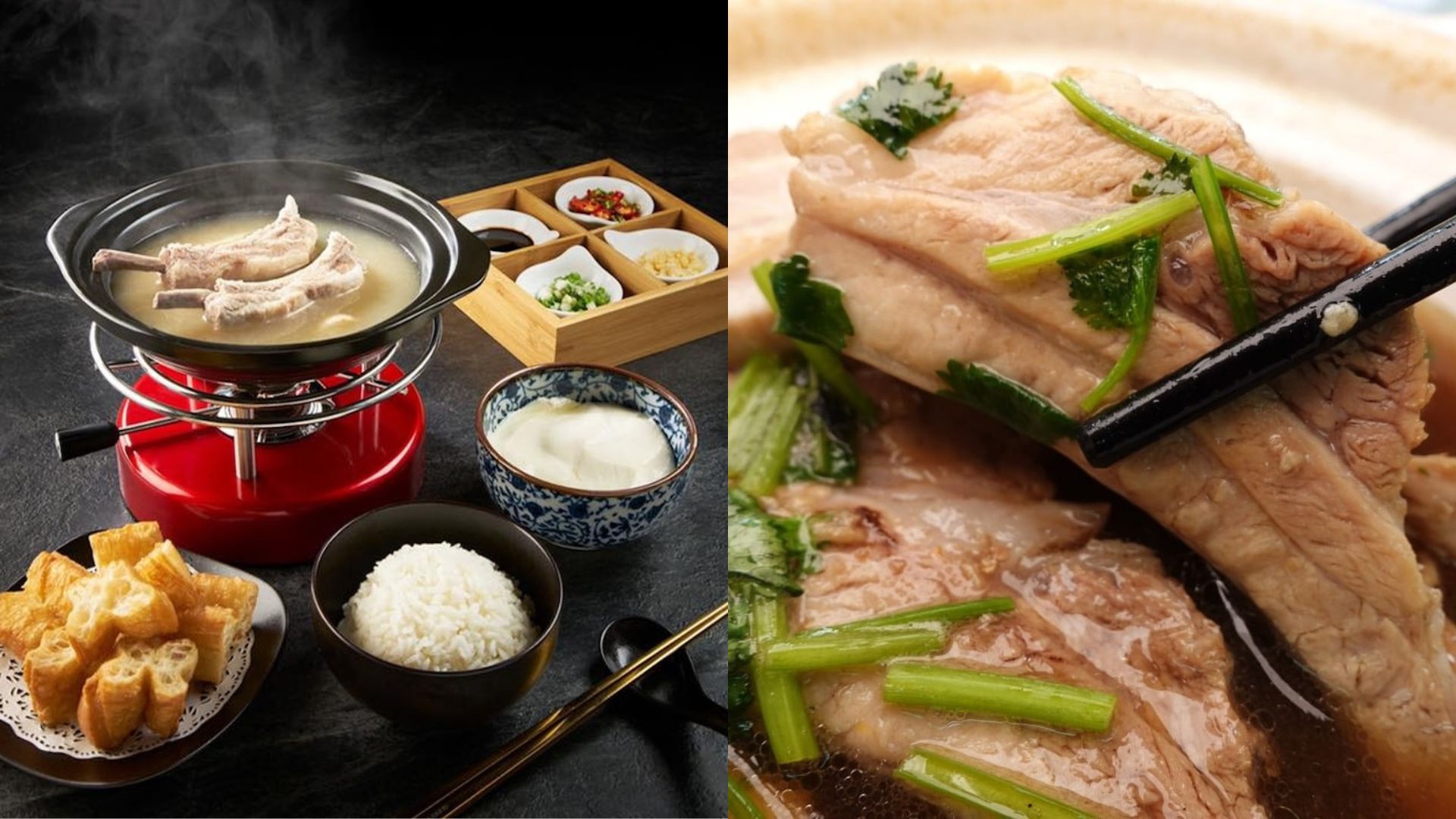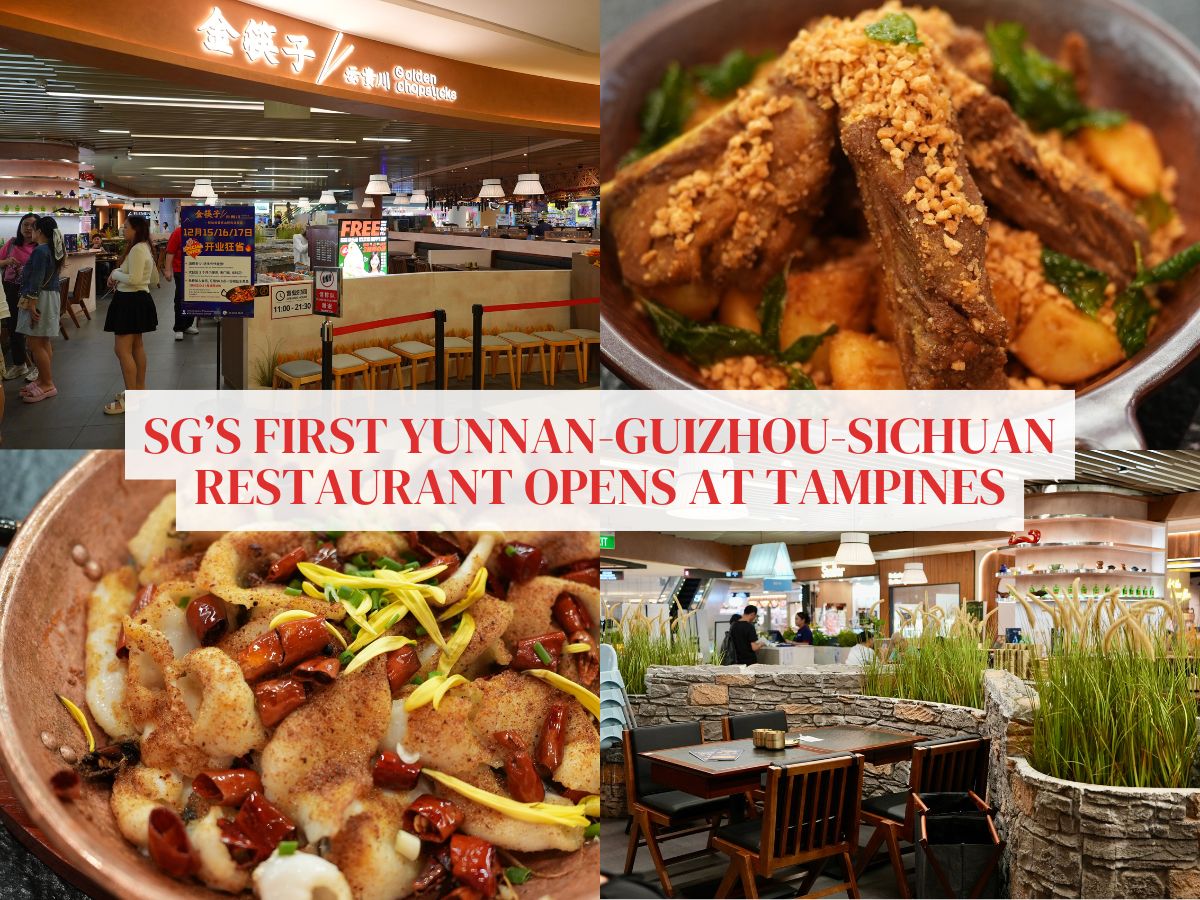Save these 15 places for comforting bak kut teh in Singapore
- 1. En Yeoh’s Bak Kut Teh
- 2. Joo Siah Bak Koot Teh
- 3. Leong Kee (Klang) Bak Kut Teh
- 4. Jia Bin Klang Bak Kut Teh
- 5. Song Fa Bak Kut Teh
- 6. Ng Ah Sio Bak Kut Teh
- 7. Founder Bak Kut Teh
- 8. Old Street Bak Kut Teh
- 9. Heng Kee Delights Bak Kut Teh
- 10. Sin Heng Claypot Bak Koot Teh
- 11. Hokkien Street Bak Kut Teh
- 12. Yong Kee Claypot Bak Kut Teh
- 13. Hua Xing Bak Kut Teh
- 14. Heng Heng Bak Kut Teh
- 15. Leon Kee Claypot Pork Rib Soup
Bak kut teh, which translates literally to “meat bone tea” in the Hokkien dialect, is a Chinese dish deeply rooted in tradition. Its taste varies depending on its origin — Teochew, Hokkien or Cantonese — but its exact origins are murky.
Some say it was brought over from Fujian, China, others say it was originally invented in Singapore by Teochew people, and some others say it first came about in Klang, Malaysia. Regardless of its beginnings, it is clear that this hearty and comforting dish, typically cooked with pork ribs, has well endured the test of time over years.
Lest you wonder why there’s a “tea” in its name, it is not an actual ingredient within the dish. Instead, it hints at the communities’ love for tea and specifically the oolong tea that’s served alongside to cut through the fatty broth.
You’ll typically find the Hokkien and Teochew variants in Singapore, as well as a dry version that’s quickly gaining popularity. With it being such a firm local favourite, there are many places you can easily find it in Singapore, but we’ve kept it easy for you with our list of our go-to spots for bak kut teh in Singapore.
1. En Yeoh’s Bak Kut Teh
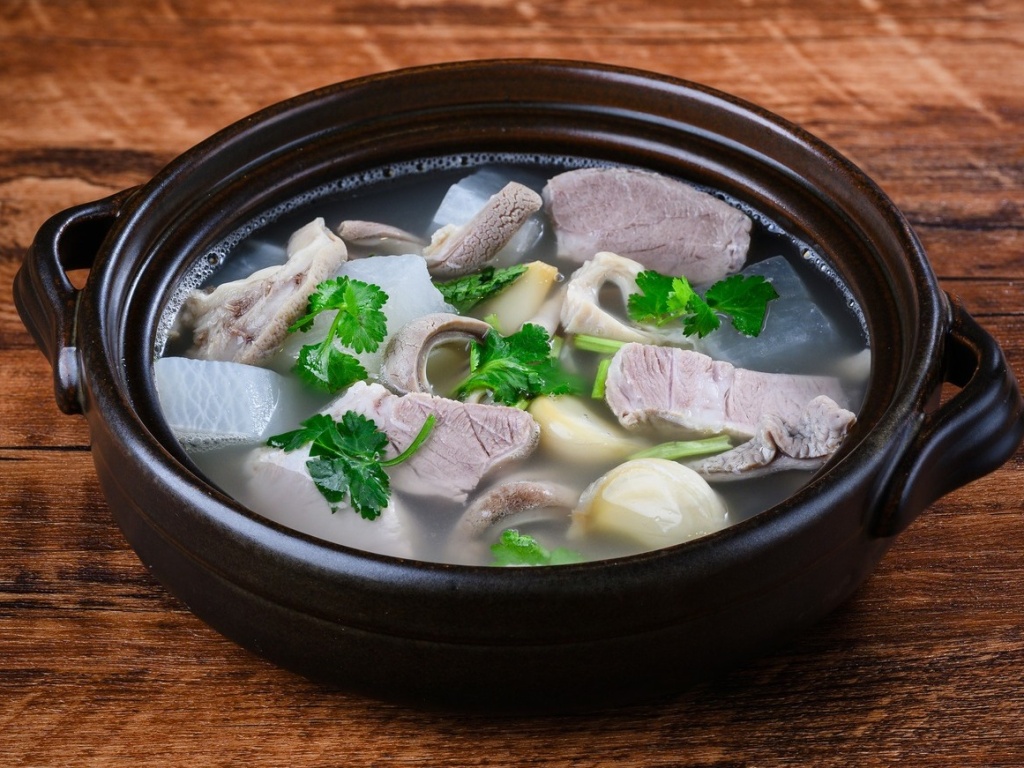
Why visit? Our list for bak kut teh in Singapore starts off strong with En Yeoh’s Bak Kut Teh. In case its name isn’t telling enough, it’s a collaboration between the decades-old Yeoh’s Bak Kut Teh right from Klang, Malaysia, and the ubiquitous En Group (which houses Aburi-En, Tamago-En. and so on). En Yeoh’s serves up Klang-style bak kut teh, coupled with a cocktail bar concept come dinner time.
The original Yeoh’s Bak Kut Teh was founded by Yeoh Tow, within the canteen of Klang’s Hokkien Association in 1990 and still stands in the same location today. It is also where the En Yeoh chefs trained before being posted to work in En Yeoh’s outlets in Singapore, ensuring its authenticity.
Crowd favourites: Its signature 4 types assorted meats claypot bak kut teh (from $10.90 for one diner, with an additional shot of Nu Er Hong Chinese wine at S$3) is a luxurious upgrade of its original dish from Yeoh’s. Using the same combination of 15 herbs and ingredients, such as Angelica root and Chinese licorice roots, the herbal broth comes with four fatty cuts: Pork trotters, ribs, belly and — a favourite — Hokkaido pork collar.
For texture, it also comes with shiitake mushrooms, button mushrooms, tofu puffs and fried beancurd sheets. The broth is, surprisingly, light and not cloying, and you’ll be happy to know that it offers one complimentary soup refill per claypot. It is best enjoyed with its Japanese scallion rice (S$2.90).
The bak kut teh is best enjoyed with tea, but if you prefer something else, En Yeoh’s offers an extensive menu of cocktails, inspired by Chinese flavours and liquors. A highlight is the approachable Sino miso (S$16), which mixes up Maotai Chun and Nu Er Hong with white miso and elderflower syrup.
2. Joo Siah Bak Koot Teh
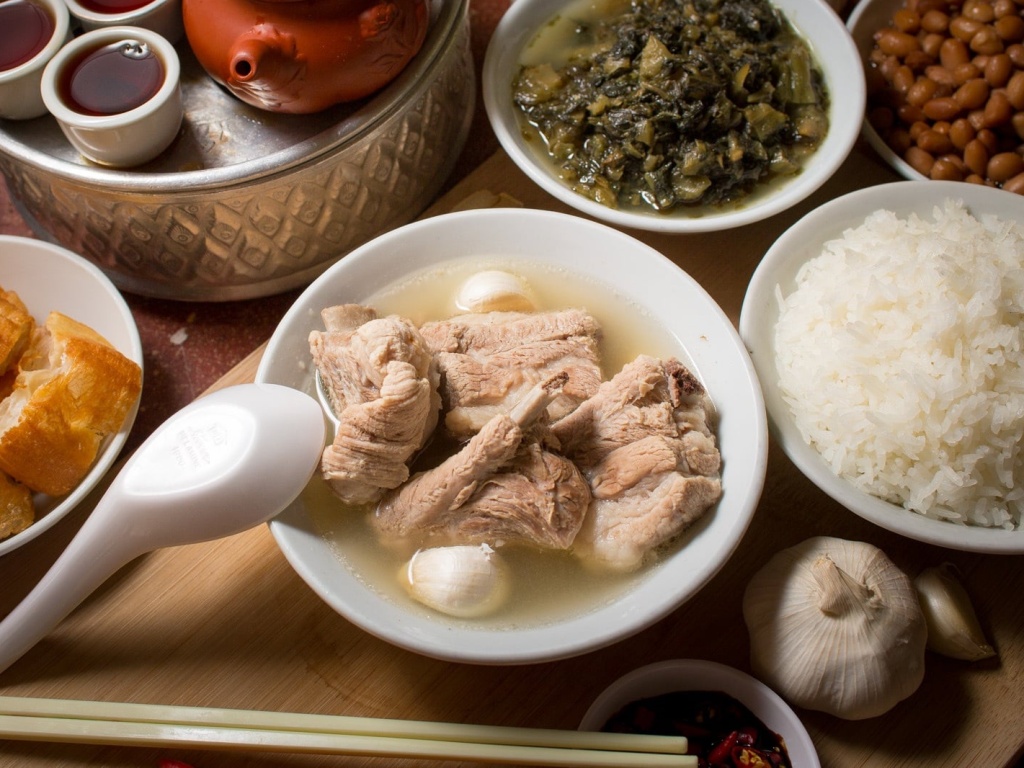
Why visit? Second-generation Ryan Chua runs Joo Siah Bak Koot Teh out of Kai Xiang Food Centre, a short stroll away from its original location at Yuhua Market & Food Centre.
Ryan’s father, Chua Sim Huat, founded Joo Siah Bak Koot Teh in 1985. Formerly a site manager at a shipyard, foodie-at-heart Sim Huat went into F&B after the financial crisis during that time, mastering the dish with the help of his brother-in-law. When he expressed a desire to retire 12 years ago, Ryan, a former banker, stepped up. Not only has he fully taken over the business, he has also done his father proud, with the brand featuring on the local Michelin Bib Gourmand list from 2021 till now.
Crowd favourites: Ryan offers a Teochew version of the dish that’s unique to Singapore. If you’ve never tried Joo Siah, get the premium loin ribs soup (S$11, only available in the morning) which features two hulking ribs in a cloudy, peppery broth.
The premium loin has a decent amount of fat and cartilage, adding to the texture of the fall-of-the-bone flesh. Intersperse the meat with spoonfuls of its broth — a bit of garlic, sweet pork, a hint of Chinese herbs and a whole lot of pepper — and you’ve got a satisfying meal right there.
To cut through the grease and as a palate cleanser, we recommend adding on the preserved vegetables and the braised peanuts (both from S$1 for a small plate).
3. Leong Kee (Klang) Bak Kut Teh
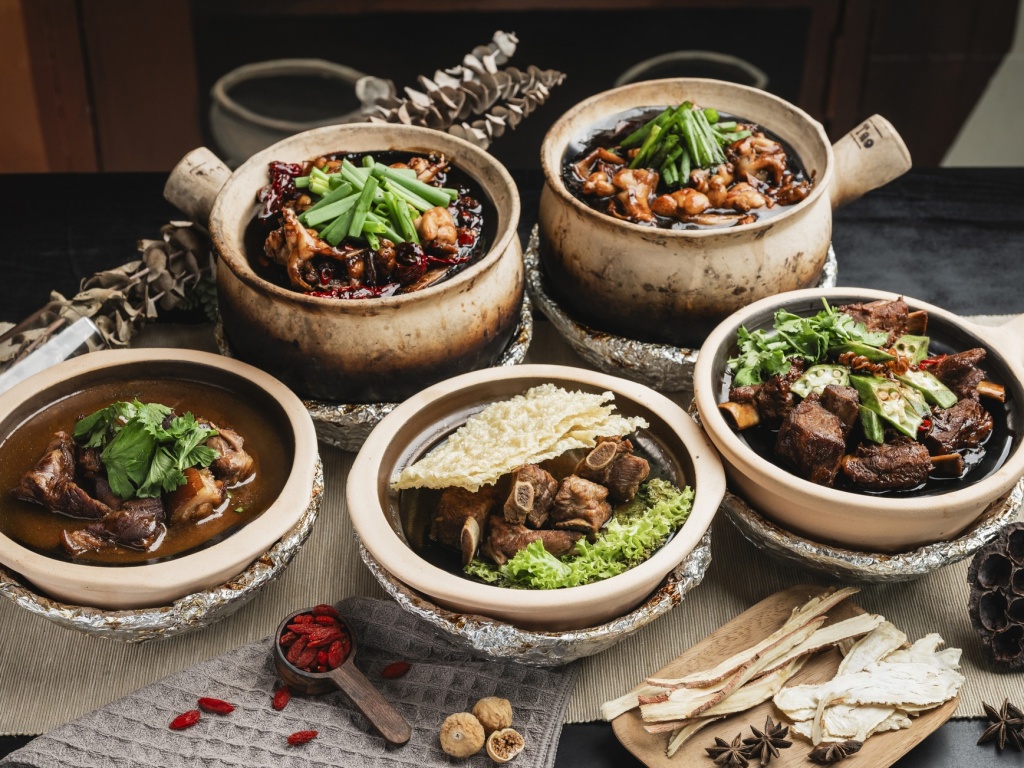
Why visit? Since 1979, Leong Kee Bak Kut Teh has earned a reputation for serving up some of the best Malaysian-style bak kut teh in Singapore. It doles out a robust broth that’s equal parts sweet and savoury.
Eating at the original Geylang outlet can be quite an experience. The eatery is located at the corner, next to the bustling Geylang road. Meal times will see snaking queues of determined diners, all salivating as claypots of that aromatic broth passes by them. It may not be the fanciest spot in town, but it is clear this has not deterred foodies.
Crowd favourites: Leong Kee Bak Kut Teh offers its signature bak kut teh, soup in various sizes (starting from S$8.80 for a single-diner portion). You’ll instantly get whiffs of the Chinese herb dang gui, responsible for its bittersweet flavour, juxtaposed against the savoury premium dark soy. Expect fork-tender ribs, fried bean curd skins, and vegetables served up together in a broth that’s been simmered for hours.
Its signature bak kut teh, dry (from S$11.80 for a single-diner portion) is just as stellar but you’ll want to go for its pig trotter (S$8.80) if you’ve got space. It sports a similar herbal profile but its flavours are amplified by the cloying fats and tendons of the cut of pork.
Find out what other gems there are in Geylang with our top 15 list.
4. Jia Bin Klang Bak Kut Teh
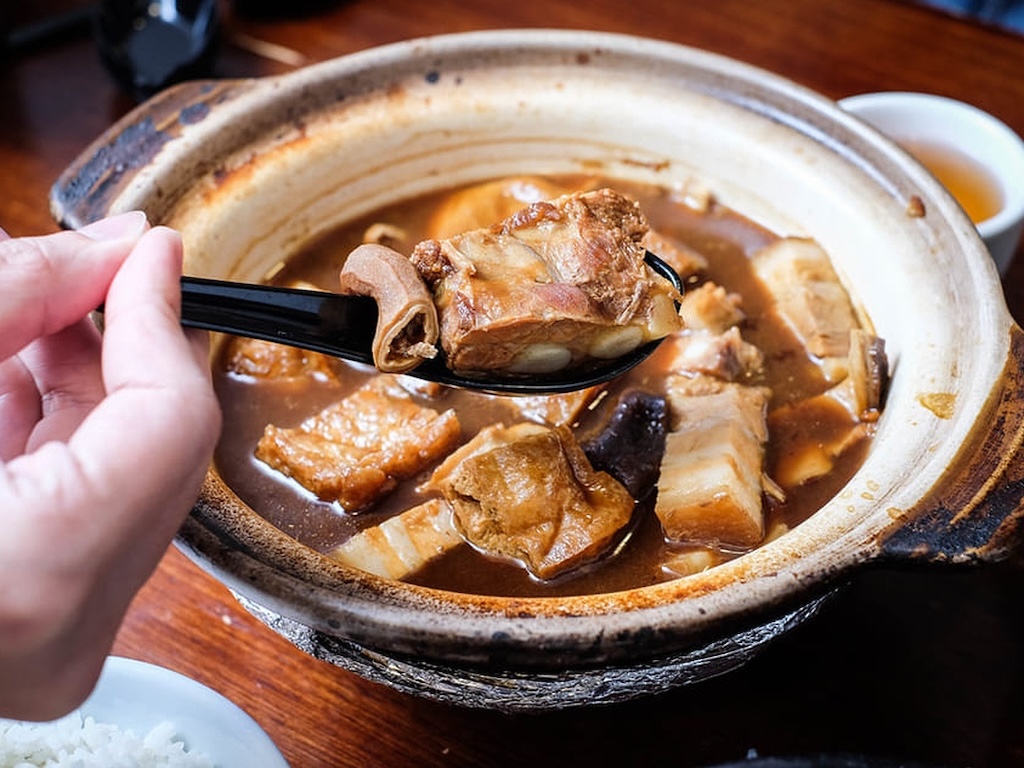
Why visit? Looking for more variations of Klang-style bak kut teh in Singapore? There’s Jia Bin Klang Bak Kut Teh, which was originally from Seremban, Malaysia. Its owner opened an overseas outpost in Singapore to introduce his family’s take — which has been served over four generations, by the way — on the beloved dish in 2018.
The eye-catching eatery at Rangoon Road, which is hard to miss because of its huge orange signs — is fuss-free. The menu is relatively succinct and focuses on its signature bak kut teh (soup and dry), claypot dishes and accompanying side dishes.
Crowd favourites: Its Jia Bin Klang bak kut teh, soup (from S$11.00 for one diner) is my pick for the one of the best Malaysia-style bak kut teh in Singapore. Its taste is predominantly herby but is sweeter than most, masking much of the fresh pork’s gamey flavours, leaving only its natural sweet flavours behind.
It is served in a claypot, with the various pork parts — ribs, belly, intestines, stomach and tail — and tofu puffs simmering away and taking on a uniform brown hue, a clear sign that they’ve spent ample time bubbling away in that addictive broth.
The staff is also diligent when it comes to adding more soup but I’ll advise not getting too greedy, as the generous amount of herbs do leave you feeling particularly invigorated.
Another favourite is the Jia Bin hua diao chicken (from S$12.80 for one portion). You get a generous portion of bone-in chicken chunks, tossed and cooked in a rich savoury sauce redolent in hua diao wine and scallions. The dish goes wonderfully with rice, especially with a hefty scoop of the sauce.
5. Song Fa Bak Kut Teh
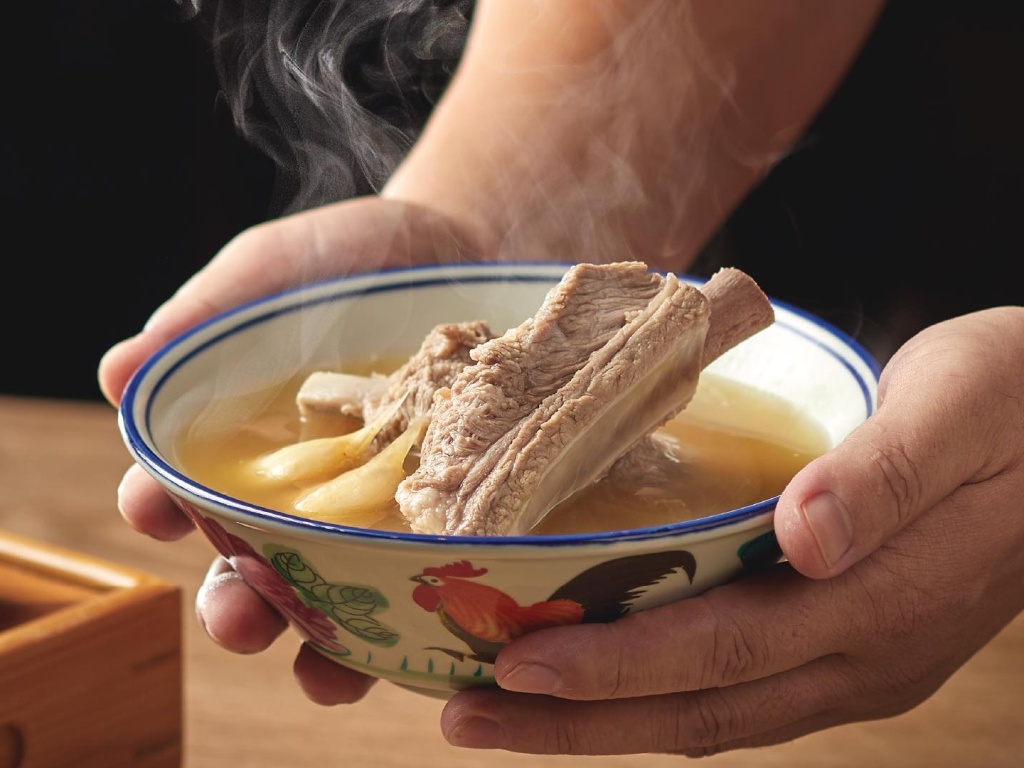
Why visit? Perhaps Singapore’s most iconic bak kut teh brand, Song Fa Bak Kut Teh started out as a pushcart along Johor Road in 1969 but has since grown into a huge company with multiple branches internationally.
Founder Yeo Eng Song comes from a big Teochew family, and picked up his culinary skills working for a zi char store at 19 years old. He eventually opened up his own place at 21, with a succinct menu of bak kut teh and braised trotters.
He eventually moved into a coffee shop along Victoria Street and Rochor Centre (which older Singaporeans, myself included, might recall eating at), and has since expanded the brand into a number of spots around Singapore and the world when his three children started to help out with the family business.
Crowd favourites: The prime spare ribs soup (S$12.90) is a must. The peppery soup is redolent with white pepper, garlic and spices, with the ribs cooked till fork-tender. The spare ribs, in particular, is a favourite as it has a nice balance of fat, flesh and cartilage and delivers a sweetness to the broth.
Check out its fellow Michelin Bib Gourmand list winners in 2024 here.
6. Ng Ah Sio Bak Kut Teh
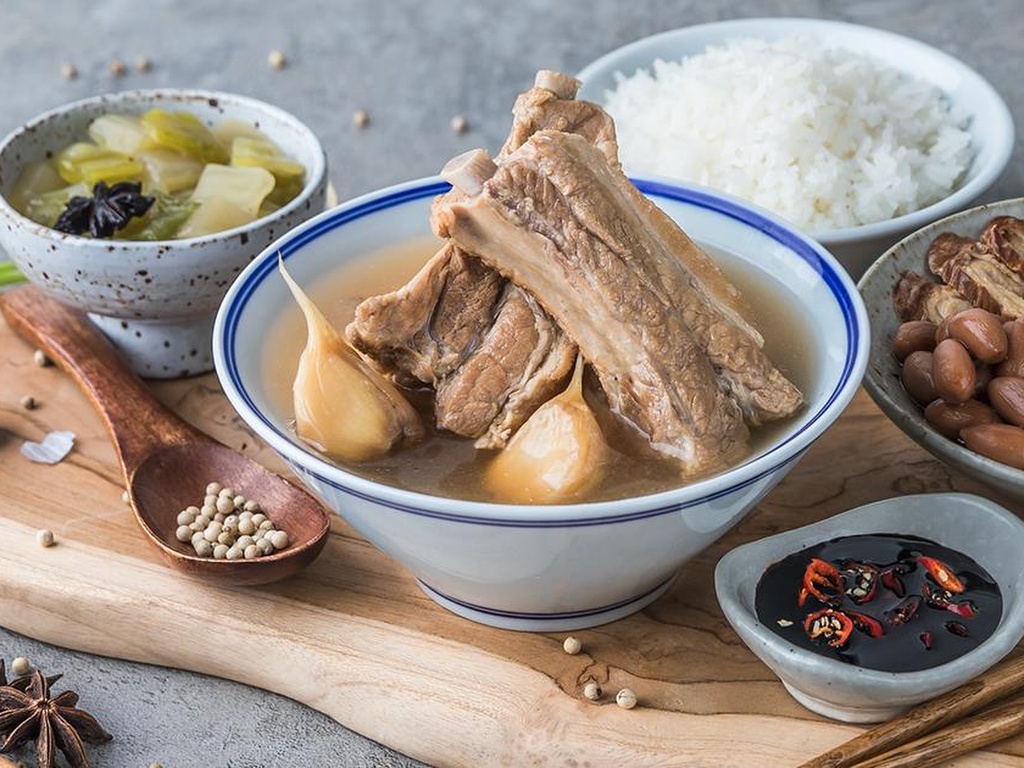
Why visit? Ng Ah Sio Bak Kut Teh is a well-known institution when it comes to Teochew-style bak kut teh. Ng Siak Hai, nicknamed Ah Sio, worked at his father’s now-defunct Ng Mui Song Bak Kut Teh, which was a popular spot to dine at in its heyday.
Since 1955, it became more famously known as the Foot of the Government Hill Bak Kut Teh owing to its location that’s the present-day Clarke Quay.
Ah Sio took over the store in 1977 and relocated the store. To stand out, he eventually renamed the store to Ng Ah Sio Bak Kut Teh, and eventually carved out a niche of his own at Rangoon Road in 1988. Ah Sio, himself, retired in 2010, and since then the Jumbo Group has taken over (with Ah Sio’s blessing, and he still holds a majority stake) to bring its version of the peppery broth to a larger local and international audience.
Crowd favourites: For the best of both worlds, go for the pork spare rib and soft bone soup (S$10.80). The broth uses a special blend of soy sauces as well as ground peppercorns, giving it its distinct brown, murky hue that accentuates the pork’s natural sweetness. You have the tender spare ribs that simply slide off the bone, as well as the soft bones that provide rich flesh as well as crunchy cartilage.
There are a multitude of sides but no one does braised pig’s skin (S$3.80) quite like Ng Ah Sio — the savoury braised has a mild sweetness that penetrates through the skin, which also has a great texture, to boot.
7. Founder Bak Kut Teh
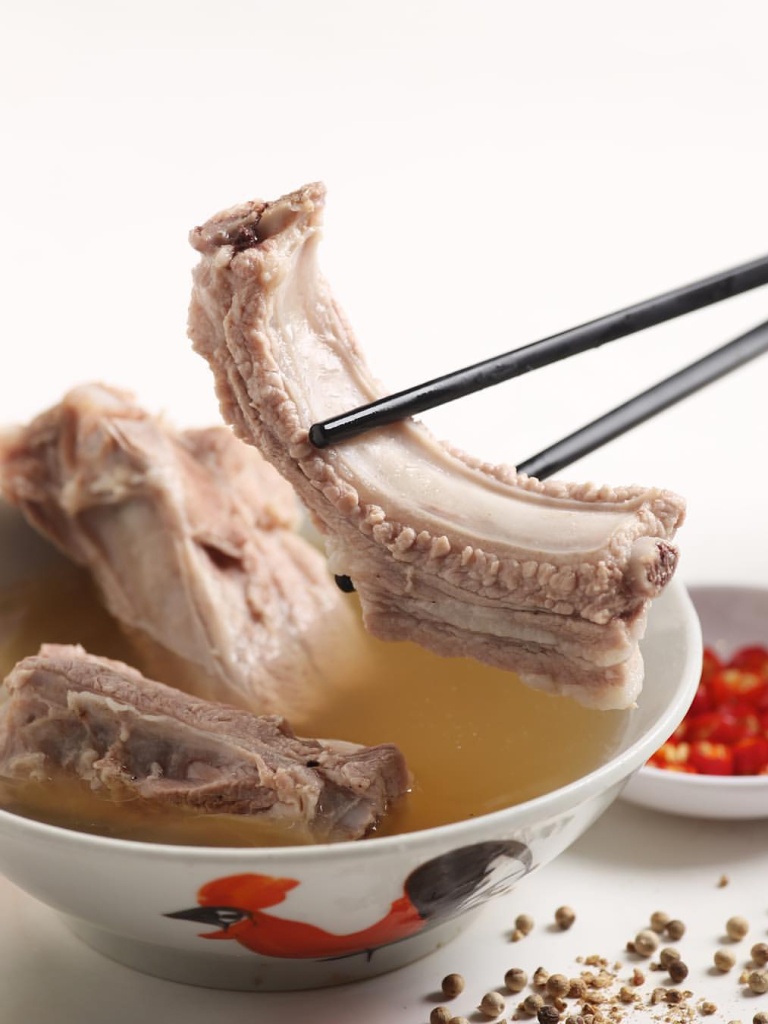
Why visit? Founder Chua Chwee Whatt was a pig farmer in Seletar and a die-hard fan of bak kut teh. Having tried many variations, he found them lacking due to their use of lower-quality ingredients, and crafted his own take on the dish, with his own pigs. Everything was self-taught, hence its name Founder Bak Ku Teh.
Chwee Whatt eventually opened up a small shop in Choa Chu Kang in 1978, and moved locations after the closure of the pig farm and the shop’s growing popularity. Thereafter, his son Nigel Chua took over and grew the shop into a multi-branch brand.
In recent years, Founder Bak Kut Teh has made quite a name for itself with an overseas audience, and has even been visited by the likes of Taiwanese singer Jay Chou and Hong Kong actress Charmaine Sheh.
Crowd favourites: The most popular is the Founder’s bak kut teh (S$9.90), which comes with both premium ribs and spare ribs. The brand continues to stick by Chwee Whatt’s commitment to using fresh, quality pork, ensuring each bowl is tender with just the right amount of fat. Its broth is arguably sweeter than most variations you get here, but it still boasts that peppery, garlicky and hint of herbs, making for one of the more refreshing bak kut teh versions in Singapore.
Because of its use of good pork, the sliced lean meat soup (S$8.30) is also a favourite, letting the otherwise-plain dish shine. The pork is tender with a slight chew, and is naturally sweet, sans any unwanted porcine flavours. It is great for those wanting to clock in their protein macros, too.
8. Old Street Bak Kut Teh
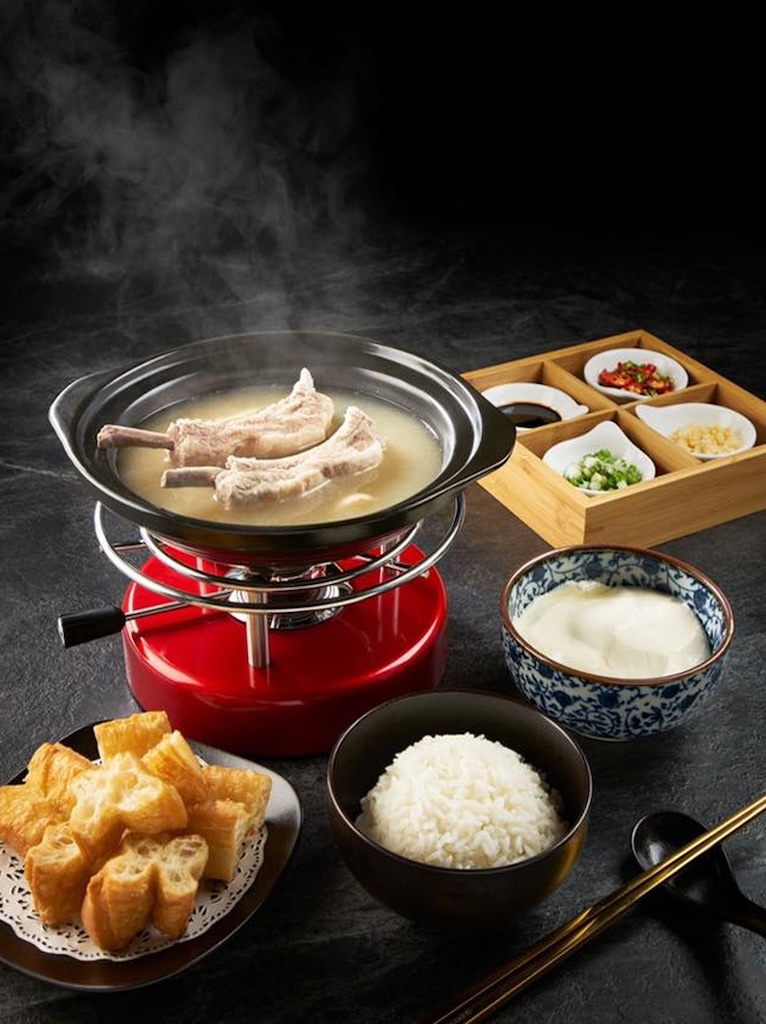
Why visit? Owner and managing director of Old Street Bak Kut Teh Jason Lim started the brand in 2010 to breathe new life into this beloved local favourite. The aim? To bring bak kut teh back into the consciousness of younger diners.
Jason had tweaked the recipes: He reduced the herbal broth to make a spicy gravy, and also introduced one of Singapore’s first seafood bak kut teh, and popularised the idea of having chilled soy milk alongside a bowl of soup, to counter the heat from the broth.
He has also made it a point to open his many branches accessibly, within air-conditioned malls, to make the dining experience a comfortable one.
Crowd favourites: Old Street Bak Kut Teh makes it real easy with its set meals. Set menu A (S$14.90) offers the most value for money. It comes with a bowl of bak kut teh, white rice, you tiao and a dessert in the form of a soybean curd. The bak kut teh itself boasts a savory, peppery broth — though it is a little heavy-handed on its seasoning — with tender ribs. Load up on the sauces at the side: Mix a dollop of minced garlic and chillies with sweet dark soy for the best dip.
Its dry bak kut teh (from S$12.20 for a small portion) stands out thanks to its addictive gravy. The same herbal soup is cooked down and mixed with dark soya sauce and dried chillies, giving us a piquant gravy that sticks onto pork ribs, cuttlefish and lady fingers. Like its soupy counterpart, this is best enjoyed with a bowl of white rice.
9. Heng Kee Delights Bak Kut Teh
Why visit? Hailing from Kuala Lumpur, Malaysia, Heng Kee Delights Bak Kut Teh has been serving up its version of herbal bak kut teh for over 40 years. Hailed as one of the best, its store in Kepong, Malaysia is always crowded, and it has even been awarded a spot on Malaysia’s Michelin Bib Gourmand list.
While it hails from Malaysia, its version is vastly different from the Klang-style variation, which is popular in Malaysia. The broth is lighter in colour but not shy on the herbs, and is also sweeter. Regardless of its style, its broth is definitely different from what’s already available here and across the Causeway, and is worth a try.
Crowd favourites: Always start with its bak kut teh soup (from S$9.80 for one portion). The broth is homely and gentle on the palate, and its subtle herbal notes interplay with the ingredients’ naturally sweet flavours. You can choose what pork parts go into your soup, with favourite choices being the half fat meat, wong tai kuat (emperor ribs, known for its fatty layer), soft bones and pig stomach.
A popular side dish to get is the yuba (S$3), where tofu puffs come served in that same broth, and explode with soupy goodness with every bite.
10. Sin Heng Claypot Bak Koot Teh
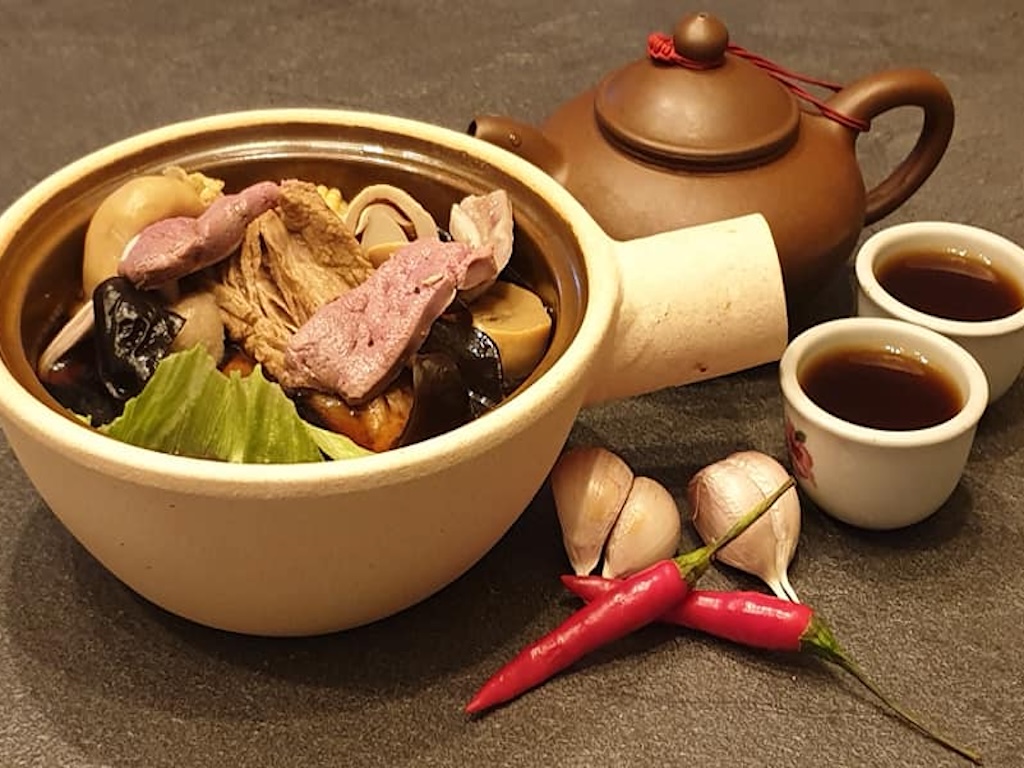
Why visit? Joo Chiat is a haven for good food, bak kut teh included. Located a short walk away from Two Men Bagel House’s eastside outlet, Sin Heng Claypot Bak Koot Teh has maintained its old-school facade for decades, standing out against the manicured stores that have opened there in recent years.
Sin Heng offers both versions of bak kut teh here: The Hokkien-style herbal broth and the Teochew-style peppery broth. To complement, there’s also a succinct list of claypot and zichar dishes. Thanks to its broad number of offerings, you’ll often find huge families dining here come weekend.
Crowd favourites: You can’t go wrong with either version but the stars are actually the other items on its claypot menu, specifically the claypot noodle (from S$6). As it is cooked in a claypot with charcoal fire, the flavours of the toppings, prawns and pork, are infused into the herbal broth and consequently the yellow noodles. It’s absolutely perfect on a rainy day.
Another must-have with your bak kut teh is its yam rice (S$1.30 a bowl). It is heavily seasoned with dried shrimps and cubed yam, making it a joy to eat even on its own. It goes particularly well with the darker, herby broth and with a little chilli padi for heat.
11. Hokkien Street Bak Kut Teh
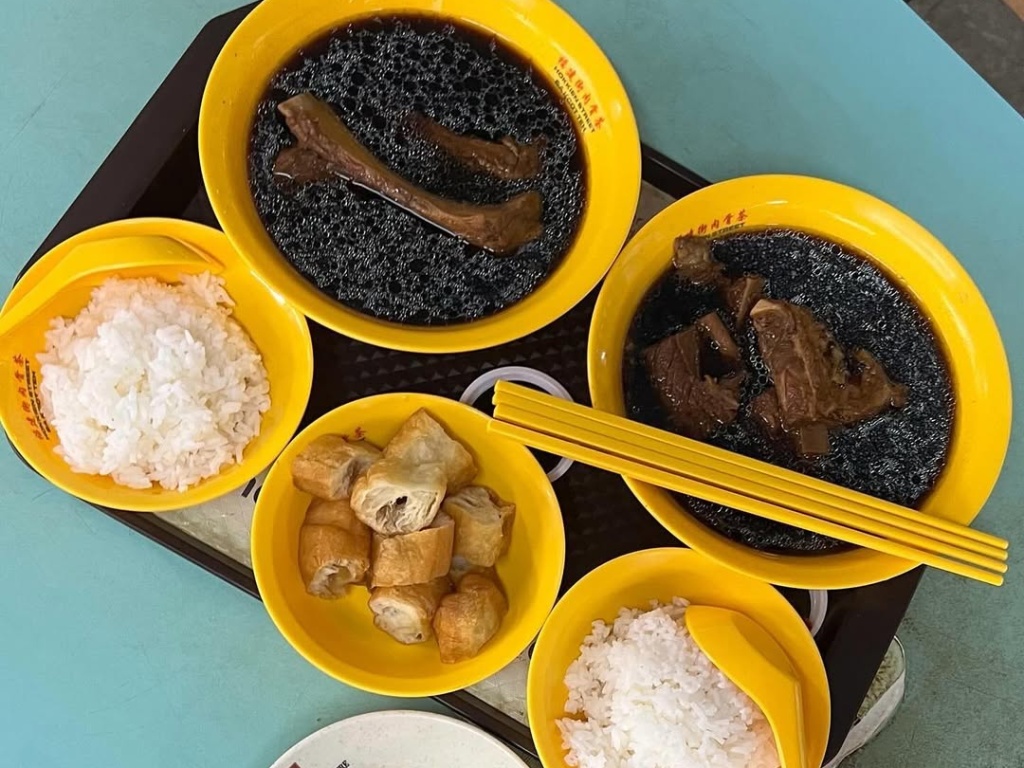
Why visit? Yet another recognisable and popular place for bak kut teh in Singapore is Hokkien Street Bak Kut Teh, located on the first floor of Hong Lim Market & Food Centre. Located within a little corner in the Chinatown hawker centre, the stall can be easily spotted thanks to the presence of multiple diners digging into its Hokkein-style dark broth within its eye-catching yellow bowls.
The brand first started in the 1960s as a street hawker along Hokkien Street, giving it its name, which it still holds till today. It has also not moved from its spot at the food centre since its inception. The decades-old brand was awarded a spot on the Michelin Bib Gourmand list in 2024, a testament to it being one of the best herbal bak kut teh spots in Singapore.
Crowd favourites: The winner here is no doubt the bak kut teh, with your choice of long or short ribs (from S$5). Despite its dark hue, the broth is surprisingly mellow. You get a strong hit of savouriness from the dark soy sauce, and its base carries the flavoursome combination of herbs, such as dang gui, cinnamon and liquorice.
The notes of garlic and pepper peeks through with enough spoonfuls of the broth, especially when enjoyed with its aromatic yam rice (S$0.70).
For a sumptuous meal, opt to add on the braised pig’s trotters (from S$4). The braise here is equally herbaceous, all to bring out the flavours of the pork. The meat breaks apart without any effort, while the skin is gelatinous, with a welcome chew from the tendons.
Check out its fellow Michelin Bib Gourmand winners available on GrabFood.
12. Yong Kee Claypot Bak Kut Teh
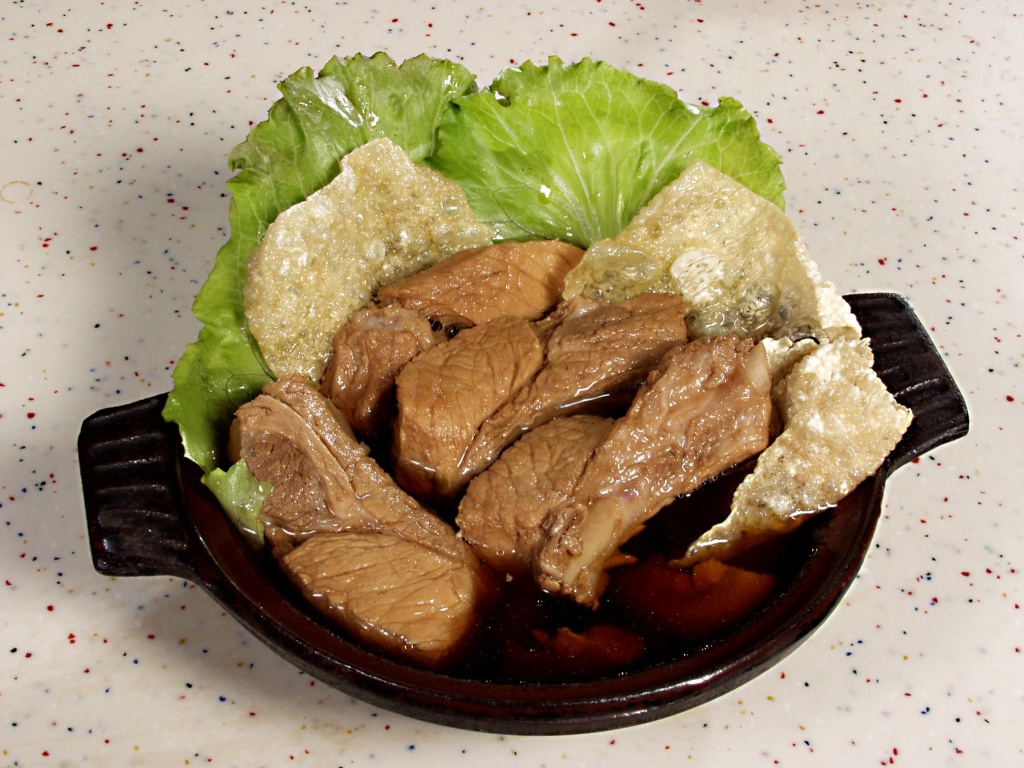
Why visit? This family-run spot has been going strong for over three decades, and for good reason. Yong Kee Claypot Bak Kut Teh serves both versions of bak kut teh in Singapore, and they do it well, with it even being recognised on the Michelin guide as a recommended spot — it’s really no surprise it’s become a favourite of those who live in the west.
The menu is simple here. You have your choice of Hokkein, Teochew or dry-style bak kut teh, along with its usual suspects of sides. Prices here are affordable, with set meals available for two diners and up. .
Crowd favourites: We are biased towards the pepper bak kut teh (from S$5). There’s a delicate balance of both garlic and pepper, with just enough of a gentle hit of savouriness that keeps you going back for more. The meat, whichever you get, is always tender.
The herbal bak kut teh (S$5) similarly showcases its ability to balance the combination of herbs that goes into the broth — sweet, salty and just a little bitter, it is a great choice for its price.
13. Hua Xing Bak Kut Teh
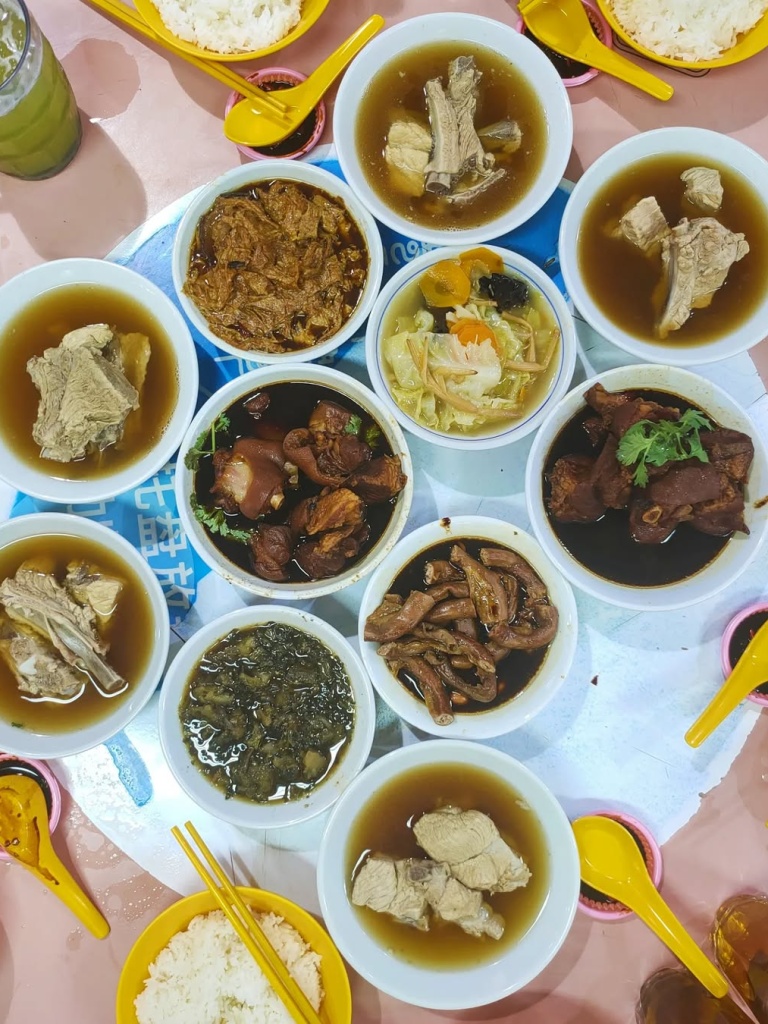
Why visit? Another bak kut teh gem in the west is Hua Xing Bak Kut Teh, which opened in 1984. It now spans two stores in Yuhua Market & Hawker Centre, serving up its peppery broth, sides, and Teochew steamed fish.
What’s most interesting, however, is that it still serves tea along with each order — a once quintessential part of bak kut teh. When dining there, you’ll spot two kettles boiling away atop a roaring fire at the side. Upon order, you are served a set of a teapot, cups and a bag of tea from Pek Sin Choon. Once you’ve poured the leaves into the pot, a staff will come by with the aforementioned kettle and top it up.
Crowd favourites: The bak kut teh (from S$5) is the peppery sort, further accentuated by the use of dark soy sauce. It is heavy on the pepper and spicy in a way that warms your stomach up — a hallmark of a good comfort food. The meat isn’t the most tender, but comes in generous portions.
Of all the sides, the preserved vegetables (S$3) deserves the spotlight. Braised till it is barely holding any shape, it is sweet, salty and earthy. It goes amazingly with the richness of the bak kut teh.
14. Heng Heng Bak Kut Teh
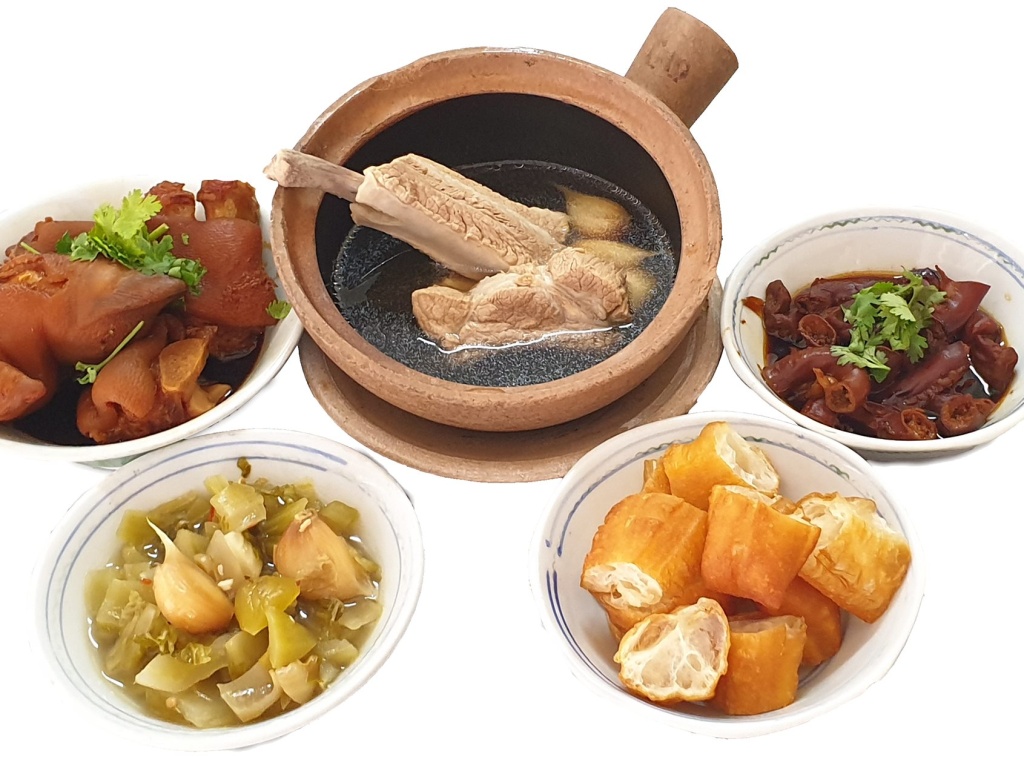
Why visit? Early risers, here’s a bak kut teh spot that’s perfect for you, as you’ll have to come early to get your taste of it. Located within a rustic coffee shop, Heng Heng Bak Kut Teh opens up as early as 7.30am and closes right after lunch ends. Despite its limited and early hours, it is often packed with regulars — a testament to its taste and quality.
It opened shop in February 1993 and has been winning fans with its sweeter, balanced take on the peppery broth and steamed fish dishes. The only issue is, perhaps, the flustered service staff that are often overwhelmed by the endless orders. But trust us: Have patience, and you’ll be served a delicious meal.
Crowd favourites: The bak kut teh (S$7) broth here is different. Lighter and sweeter, with prominent notes of cinnamon and star anise, the garlic and peppery notes are more of a warming accompaniment then the actual star. It is a gentle alternative to those who simply want a rejuvenating broth, particularly for breakfast. The meat will need some strong teeth, but if you’re good with innards, the kidney (from S$6) is a must.
Often ordered along with the bak kut teh, the steamed fish (market price, enquire staff when ordering) is delicious, and what type of fish is served depends on the freshest catch from the market. Variations include yellow croaker, grey mullet, and the sought-after white-spotted rabbit fish. It is served as it, with limes on the side. Simply peel off the skin, squeeze some lime, and dip it into the iconic Teochew sauce of chopped garlic, bird’s eye chilli, and salted fermented soy beans (taocheo), for the best bite.
15. Leon Kee Claypot Pork Rib Soup
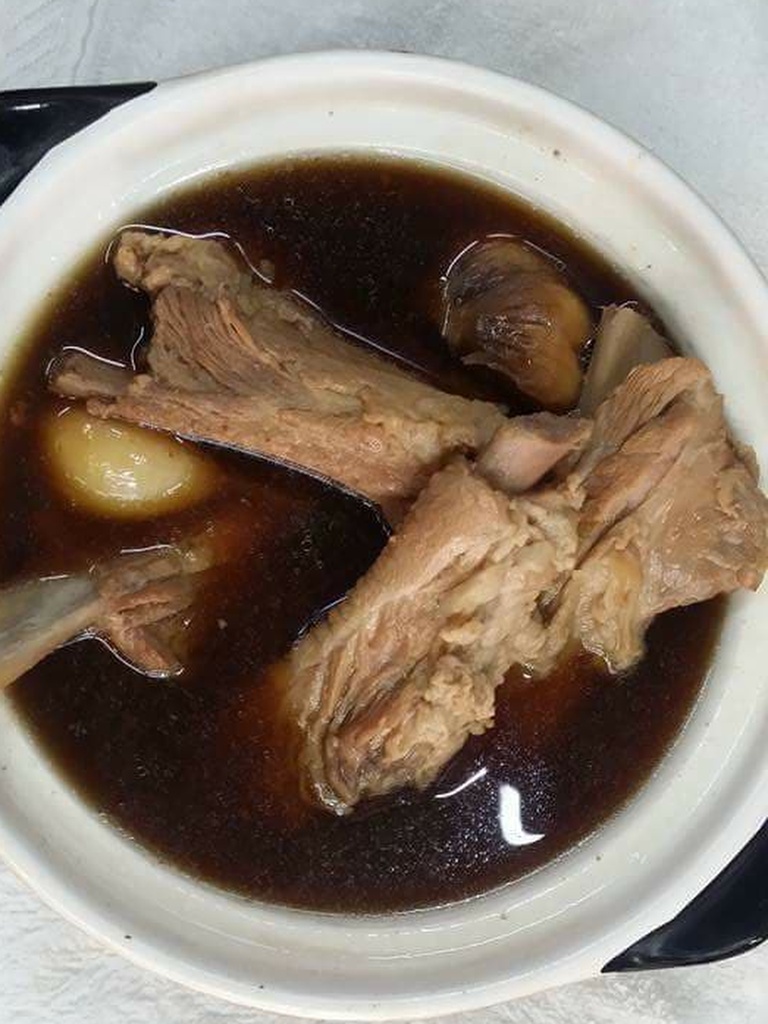
Why visit? A lighter take on Hokkien-style herbal bak kut teh can be found at Leon Kee Claypot Pork Rib Soup, over at Alexandra Village Food Centre.
This humble store stands out for its quality — the broth here is rich in herbs, redolent with dang gui to impart a delectable sweet yet earthy flavour, while the pork and innards are always fresh and tender.
It also offers lu wei (braised meats), claypot dishes, and even oyster omelette.
Crowd favourites: Skip the usual order and go for the liver, kidney and intestines with mee sua (from S$6) instead. You get the same herbal broth but with freshly sourced and cleaned innards. The liver is tender, the kidney has a satisfying crunch, and the intestines have just the right amount of fat and chew.
If you want to try more innard dishes (as you should), another popular dish is the claypot liver (from S$12), where fresh liver slices are cooked in a claypot with a sweet savory concoction of dark soy, sesame oil, ginger and scallions. It’s aromatic and downright delicious.
For more places to dine in Singapore, read on our list of 14 places to go to for your ayam penyet fix or check out the new openings of September 2025.
